Plymouth Car Reviews and Road Tests |
|
 |
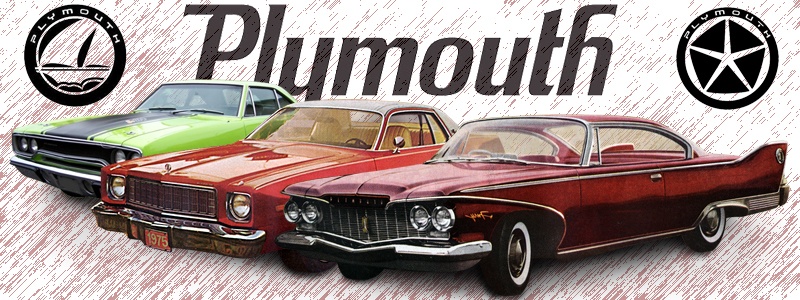
|
|
The Big Three US car manufacturers have always had several divisions competing at different sectors of the market, and Plymouth has been at the low-end of the Chrysler range. The name was the brainchild of then Chrysler Sales Manager Joseph Frazier, he using Plymouth Rock for his inspiration – the place where the Pilgrim Fathers first set foot on American soil. Much like the competition, Plymouth borrowed heavily from the parts bin of its parent company, but where it was different was in how advanced those parts were. While Ford and Chevrolet still used wooden frames and mechanical brakes, the Plymouths used an all steel body and hydraulic brakes.
This made them a little more expensive than the competition, but they were undeniably a superior car in every way. It was pretty obvious to most just how superior the Plymouth was, and they enjoyed immediate sales success. In 1930, at the beginning of the Great Depression, Plymouth sold some 68,000 cars, quite a feat for a division barely 2 years old! To keep costs down, the early Plymouth’s used 4 cylinder engines, but unlike the competition the engines were mounted via rubber bushes, giving them unrivalled smoothness for a four cylinder. It quickly assumed 3rd position on the US sales charts, even beating parent Chrysler.
A six cylinder engine arrived in 1933, this addition to the line-up helping the marque go from strength to strength. In 1940, when Walter Chrysler died, Plymouth were manufacturing a half-million cars per year. After the war new Chrysler chief K.T. Keller insisted on a sensible three-box style for the new Plymouth’s, instead of the more forward looking “streamliner” style that was becoming increasing popular. Sales took a dive, and continued to slide until revolutionary stylist Virgil Exner was brought in during the 1950’s.
He brought Plymouth into the “tail-fin” era long before the competition, and once again Plymouth were a “style leader” rather than follower. The heady days prior to World War 2 were never to be revisited, but the marque was at least salvaged. Plymouth pre-empted the move toward more compact cars in the early 1960’s, the resultant Valiant being popular – never more so than in Australia. In the late 1960’s came such wonderful iterations as the Fury and Belvedere, along with the Mustang punishing Barracuda. |
 |
 |
|
1958 - 1960
Featuring in Stephen King's horror flick "Christine" did little to enhance the reputation of the Plymouth Fury as a sought after classic for the collecting connoisseur, nevertheless it remains as one of the finest examples of stylist Virgil Exner's 'Forward Look' period at Chrysler, a watershed in 50's contemporary design. More>> |
 |
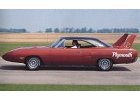 |
|
1958 - 1960
While many cars have benefited from the aerodynamic enhancements added to cars to make them suitable for the race track, probably of most note in Australia being the Torana A9X, the Plymouth Road Runner takes the award for having the most ridiculous aerodynamic enhancements, putting even the Subaru WRX bonnet scoop to shame. More>> |
 |
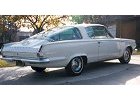 |
|
1964 - 1966
Released only 2 weeks before the Mustang, the stylish 2 door Barracuda coupe was really only a tidied up version of the Valiant 4 door sedan, however it did feature a dramatic fastback roofline incorporating a large wrap-around rear window. More>> |
 |
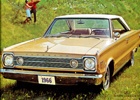 |
|
1965 - 1967
When a new, larger Plymouth Fury was introduced for 1965 on Chrysler's full-size C platform, the Plymouth Belvedere name was moved to Plymouth's "new" mid-size line which was really a continuation of Plymouth's full-size 1962– 1964 models. The Belvedere Satellite was the top trim model in the series, above the Belvedere I and II. More>> |
 |
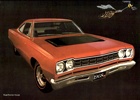 |
|
1968
The Road Runner was the simplest, starkest, most brazenly pure, non-compromising super car in history. But it was this very simplicity that American muscle car aficionados would soon realise was very much a virtue. By 1968 the super cars had been around for a while, but the ’68 Road Runner was one of the first that had really come of age. More>> |
 |
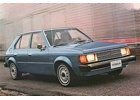 |
|
1978 - 1990
Following the release of the Simca Horizon, which was sold in Europe as an intermediate model between the 1100 and the Chrysler Alpine, Chrysler released the Horizon in the USA - a rather different car carrying a Plymouth badge. More>> |
 |
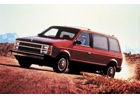 |
 |
1984 - 1990
What made the Voyager special was the fact that it was "garageable". Prior to 1984, American built people-movers, including the first Chrysler people mover to use the Voyager moniker, were "full-size", and whilst offering capacious seating and space for a family as big as the Brady Bunch, their main drawback was that they were too large to fit through a standard height garage door. More>> |
|
|
| Sell Your Car or Parts Browse the Classifieds It's Absolutely Free! - Find Out More |
|




